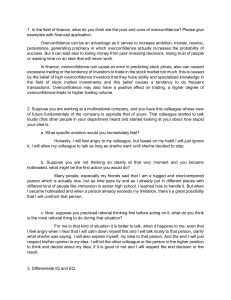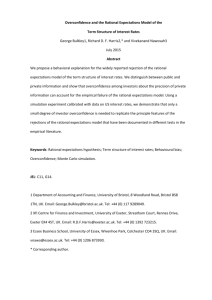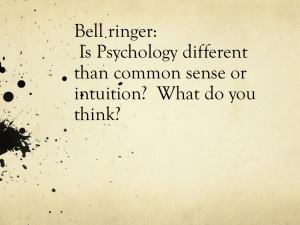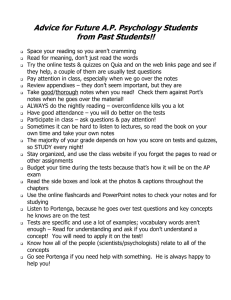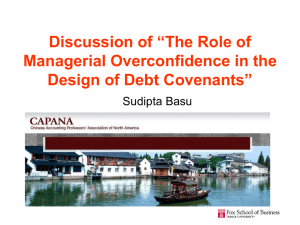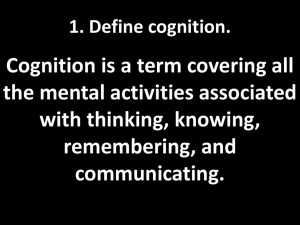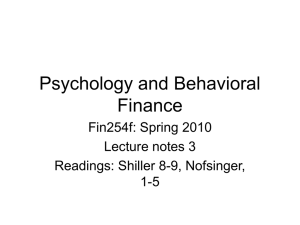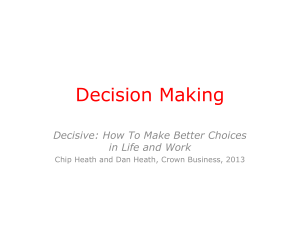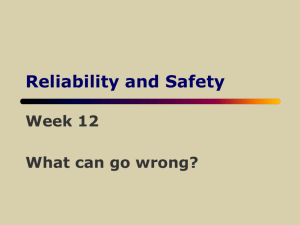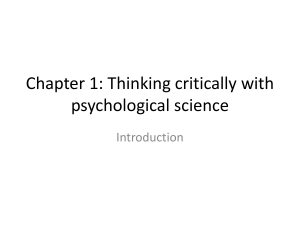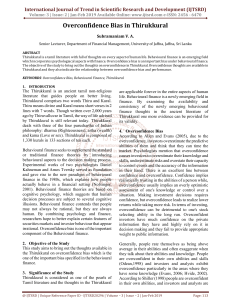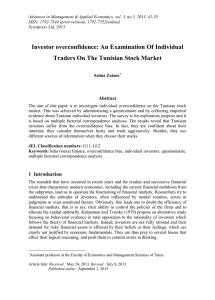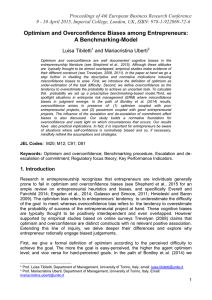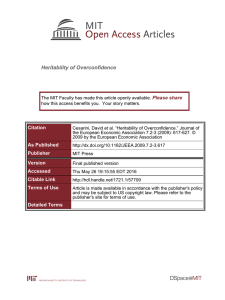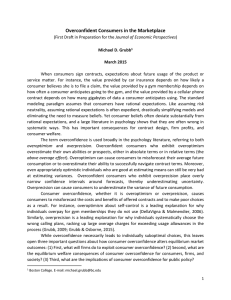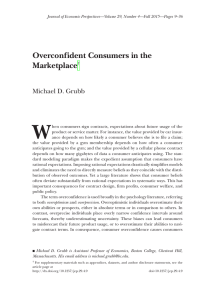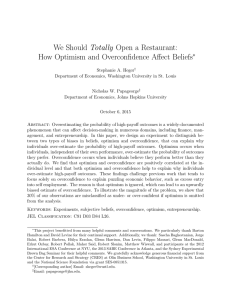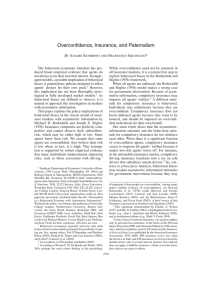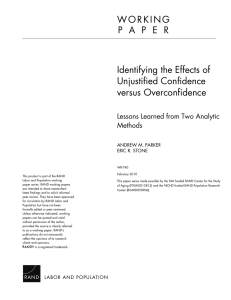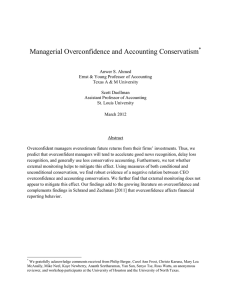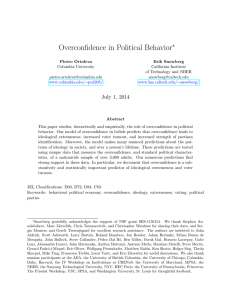Reprints 8/22/2010 Economic View - The Overconfidence …
advertisement
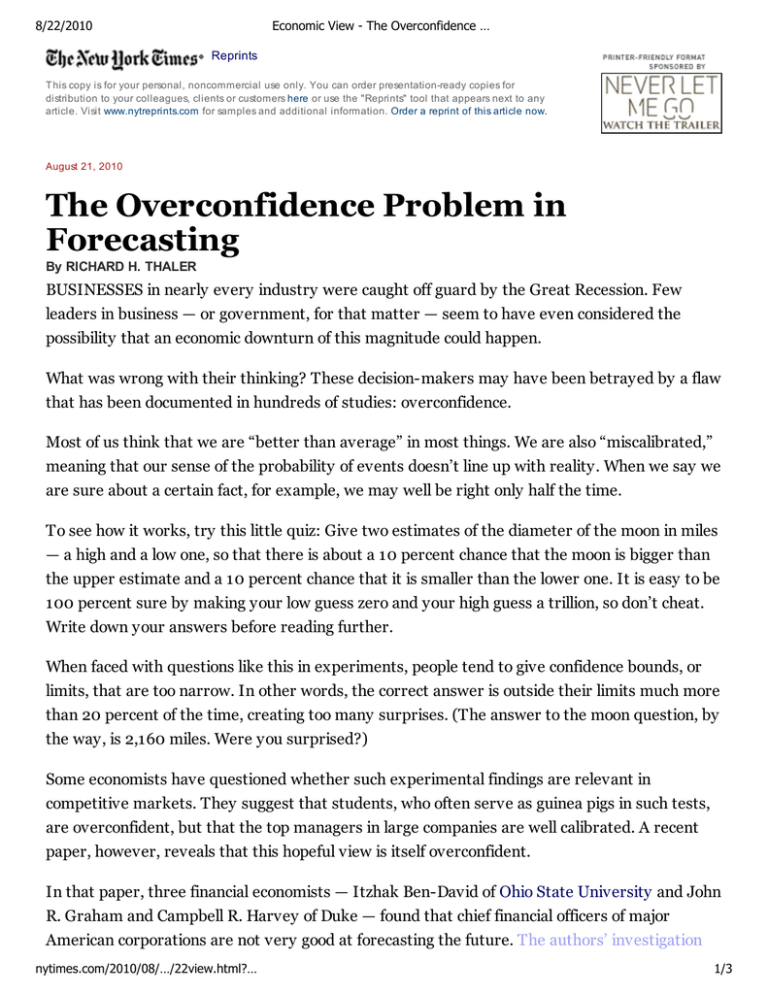
8/22/2010 Economic View - The Overconfidence … Reprints This copy is for your personal, noncommercial use only. You can order presentation-ready copies for distribution to your colleagues, clients or customers here or use the "Reprints" tool that appears next to any article. Visit www.nytreprints.com for samples and additional information. Order a reprint of this article now. August 21, 2010 The Overconfidence Problem in Forecasting By RICHARD H. THALER BUSINESSES in nearly every industry were caught off guard by the Great Recession. Few leaders in business — or government, for that matter — seem to have even considered the possibility that an economic downturn of this magnitude could happen. What was wrong with their thinking? These decision-makers may have been betrayed by a flaw that has been documented in hundreds of studies: overconfidence. Most of us think that we are “better than average” in most things. We are also “miscalibrated,” meaning that our sense of the probability of events doesn’t line up with reality. When we say we are sure about a certain fact, for example, we may well be right only half the time. To see how it works, try this little quiz: Give two estimates of the diameter of the moon in miles — a high and a low one, so that there is about a 10 percent chance that the moon is bigger than the upper estimate and a 10 percent chance that it is smaller than the lower one. It is easy to be 100 percent sure by making your low guess zero and your high guess a trillion, so don’t cheat. Write down your answers before reading further. When faced with questions like this in experiments, people tend to give confidence bounds, or limits, that are too narrow. In other words, the correct answer is outside their limits much more than 20 percent of the time, creating too many surprises. (The answer to the moon question, by the way, is 2,160 miles. Were you surprised?) Some economists have questioned whether such experimental findings are relevant in competitive markets. They suggest that students, who often serve as guinea pigs in such tests, are overconfident, but that the top managers in large companies are well calibrated. A recent paper, however, reveals that this hopeful view is itself overconfident. In that paper, three financial economists — Itzhak Ben-David of Ohio State University and John R. Graham and Campbell R. Harvey of Duke — found that chief financial officers of major American corporations are not very good at forecasting the future. The authors’ investigation nytimes.com/2010/08/…/22view.html?… 1/3 8/22/2010 Economic View - The Overconfidence … used a quarterly survey of C.F.O.’s that Duke has been running since 2001. Among other things, the C.F.O.’s were asked about their expectations for the return of the Standard & Poor’s 500-stock index for the next year — both their best guess and their 80 percent confidence limit. This means that in the example above, there would be a 10 percent chance that the return would be higher than the upper bound, and a 10 percent chance that it would be less than the lower one. It turns out that C.F.O.’s, as a group, display terrible calibration. The actual market return over the next year fell between their 80 percent confidence limits only a third of the time, so these executives weren’t particularly good at forecasting the stock market. In fact, their predictions were negatively correlated with actual returns. For example, in the survey conducted on Feb. 26, 2009, the C.F.O.’s made their most pessimistic predictions, expecting a market return of just 2.0 percent, with a lower bound of minus 10.2 percent. In fact, the market soared 42.6 percent over the next year. It may be neither troubling nor surprising that C.F.O.’s can’t accurately predict the stock market’s path. If they could, they’d be running hedge funds and making billions. What is troubling, though, is that as a group, many of these executives apparently don’t realize that they lack forecasting ability. And, just as important, they don’t seem to be aware of how volatile the market can be, even in “normal” times. Another intriguing finding is that their confidence limits widen after bear markets, mostly because estimates at the lower bound become more pessimistic. This puts a new light on the recent comment by Ben S. Bernanke, the Federal Reserve chairman, that the economic outlook was “unusually uncertain.” Although I instinctively share that assessment, these results suggest that it may be an illusion: Yes, things feel more uncertain after bad times, but severe market downturns tend to occur after long bull markets when we are feeling least uncertain. In the C.F.O. survey conducted in mid-2007, for example, the average lower bound was for a market return of 0.2 percent in the next year. In other words, the worst-case scenario anticipated by the group was a flat market. Of course, the market was soon to begin its plunge. Just like C.F.O.’s, chief executives often suffer from overconfidence, which can cause them to act unwisely. For example, in a 1986 paper, the economist Richard Roll of the University of California, Los Angeles, suggested that overconfidence, or what he called hubris, could explain why companies pay large premiums to take over other businesses. These premiums seem puzzling because the acquiring companies often don’t seem to profit from the takeovers. Professor Roll pointed out that the acquirers have typically done very well in the recent past, leading their C.E.O.’s to the mistaken belief that their success can be replicated in takeover targets once they are in charge of them. nytimes.com/2010/08/…/22view.html?… 2/3 8/22/2010 Economic View - The Overconfidence … PROFESSOR ROLL recently wrote another paper on this topic with three French collaborators. In this case, they investigated a particular form of hubris — narcissism — by using a simple and unobtrusive gauge that has been validated by psychologists: just count the number of times a person uses the first-person pronoun in communication. They found that the more narcissistic C.E.O.’s make more aggressive takeovers at higher prices than their more self-effacing brethren do, and that these aggressive takeovers aren’t as well received by the stock market. Two lessons emerge from these papers. First, we shouldn’t expect that the competition to become a top manager will weed out overconfidence. In fact, the competition may tend to select overconfident people. One route to the corner office is to combine overconfidence with luck, which can be hard to distinguish from skill. C.E.O.’s who make it to the top this way will often stumble when their luck runs out. The second lesson comes from Mark Twain: “It ain’t what you don’t know that gets you into trouble. It’s what you know for sure that just ain’t so.” Richard H. Thaler is a professor of economics and behavioral science at the Booth School of Business at the University of Chicago. nytimes.com/2010/08/…/22view.html?… 3/3
